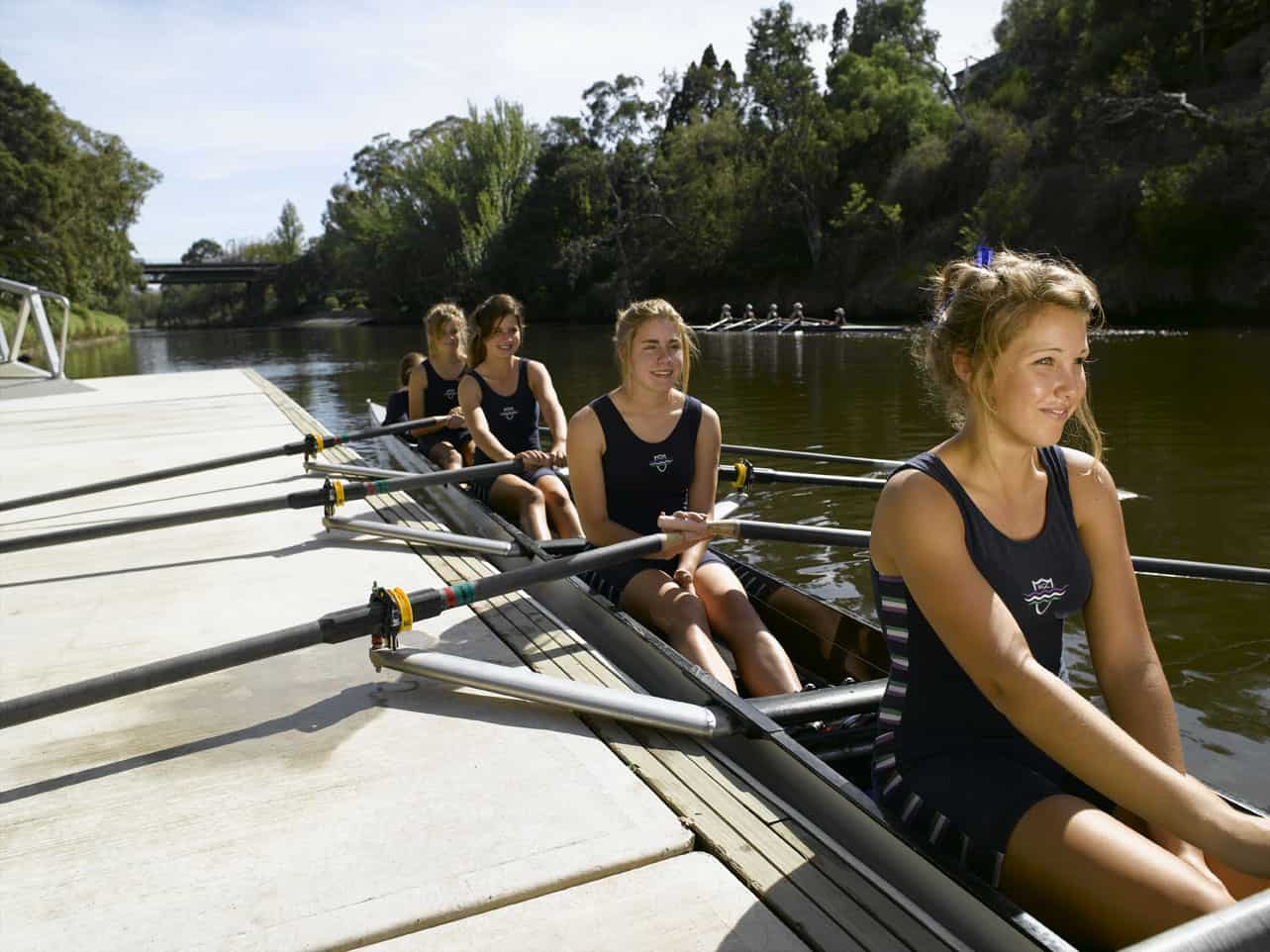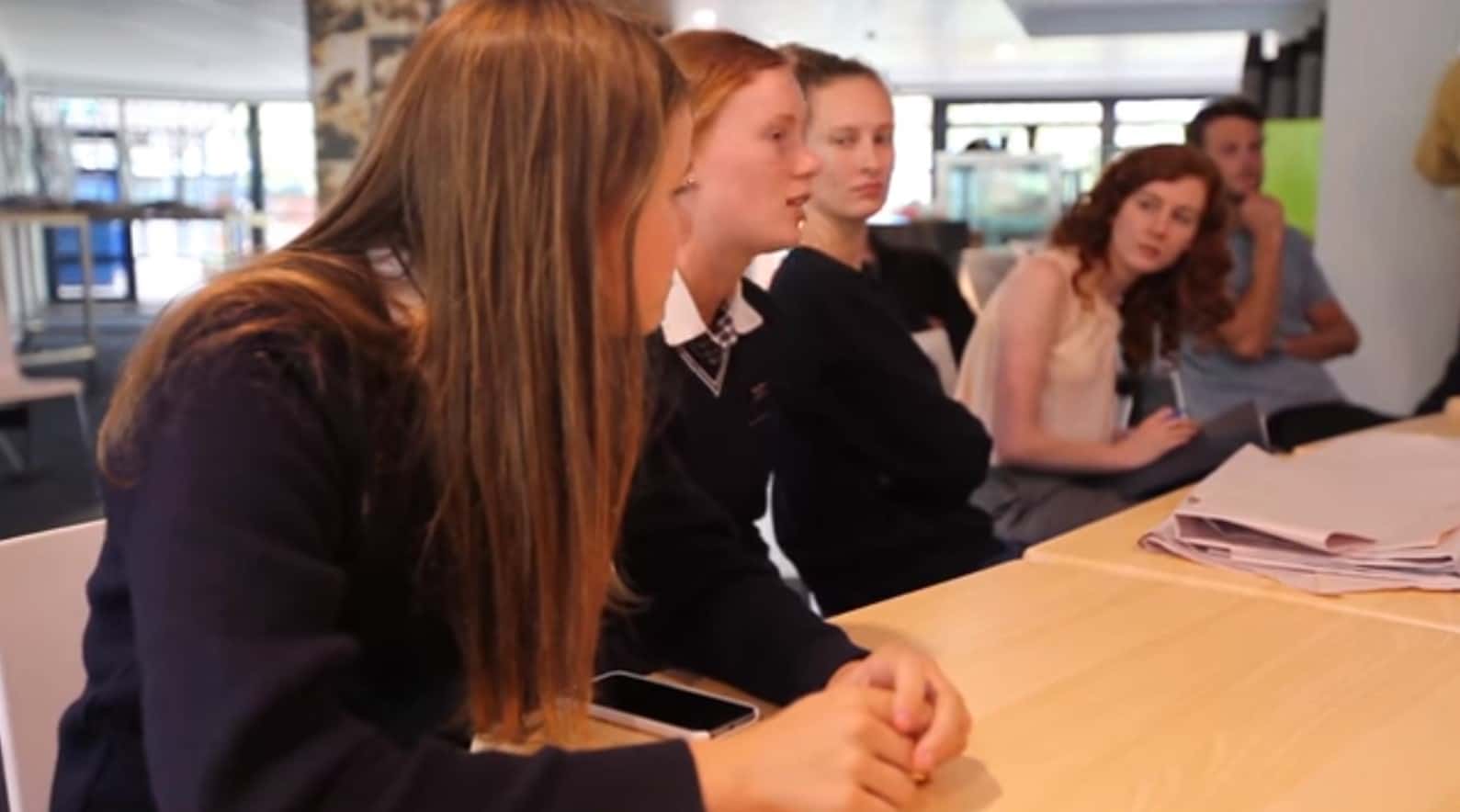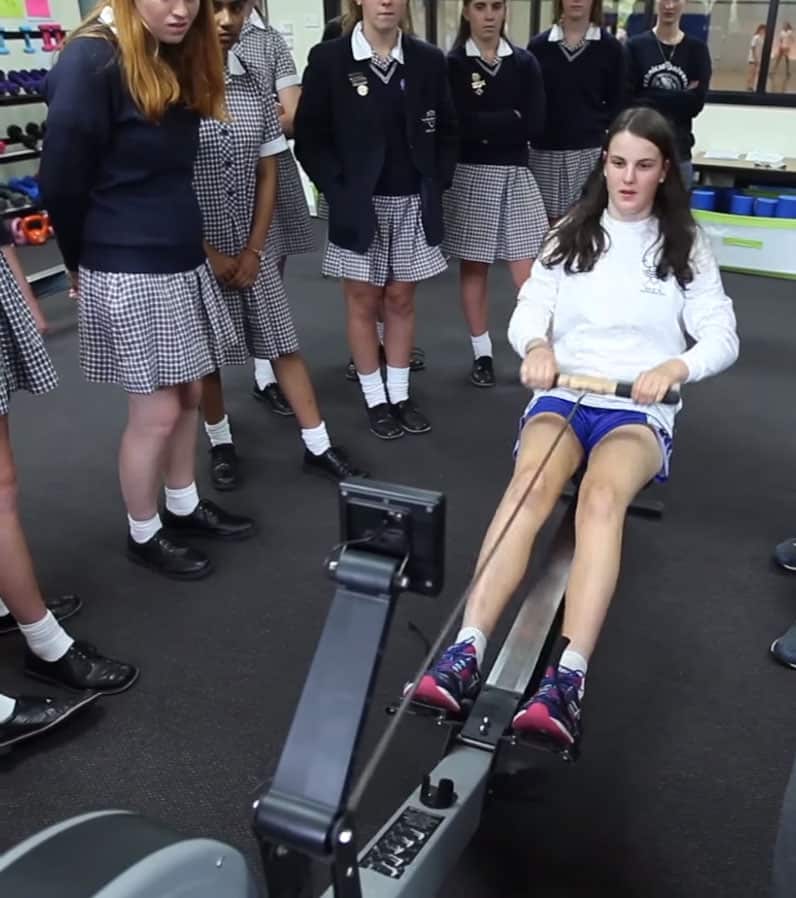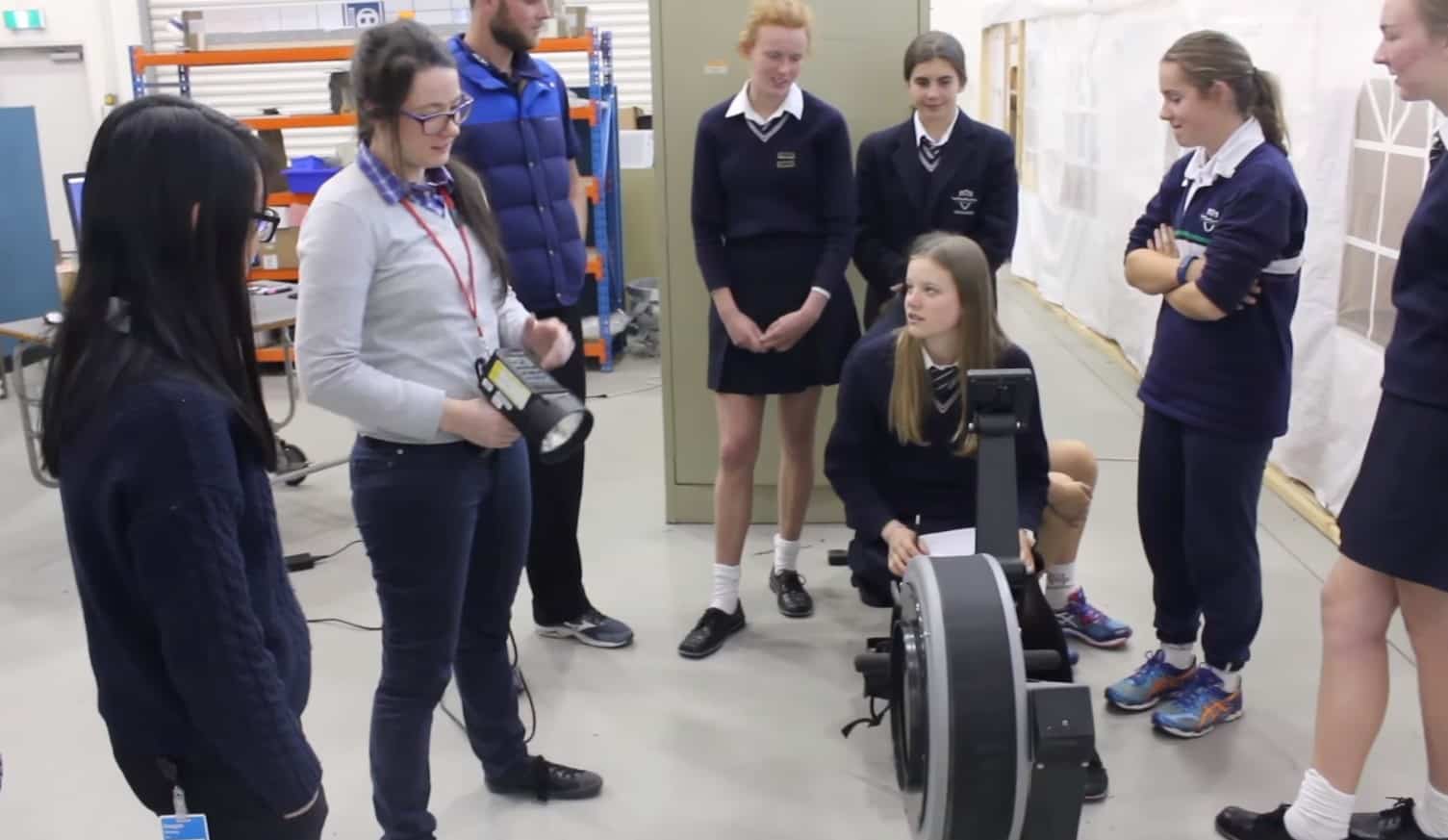
A number of Invetech’s female design and engineering staff have been working with students at the Melbourne Girls’ College – mentoring and inspiring young women to consider a career in the STEM disciplines (science, technology, engineering and mathematics).
Melbourne Girls’ College (MGC) has a rich history of competitive rowing, due in no small part to its enviable location on the iconic Yarra River in Melbourne, Australia. When students aren’t training on the water, they can spend countless hours on stationary indoor rowing machines known as “ergos.” The wasted energy of stationary training got some of the students thinking – was there a way they could make use of this expended energy (sweat equity) to generate clean electricity?
The idea of combining sustainability goals and rowing machines was central to MGC’s winning entry for the Zayed Future Energy Prize. This annual international award celebrates achievements in the fields of renewable energy and sustainability. A key component of the college’s Zayed submission was the conversion of the ergo rowing machines into electricity generation devices. Winning the prize enabled MGC to launch a renewable energy education center to integrate the study of renewable energy within the school curriculum.



